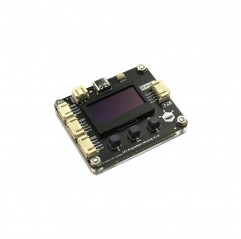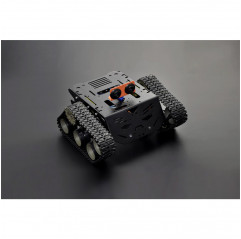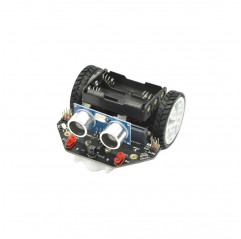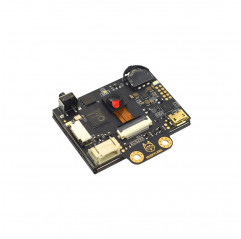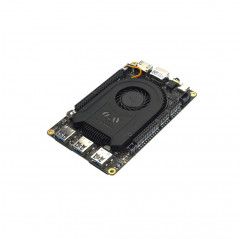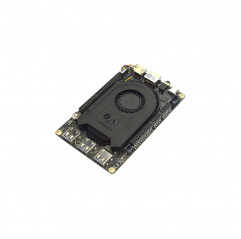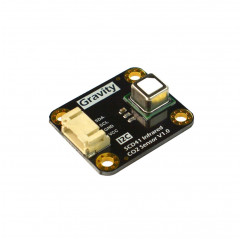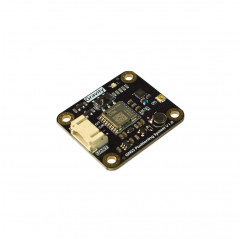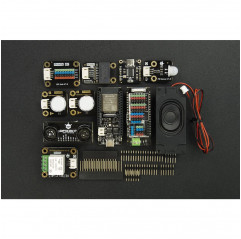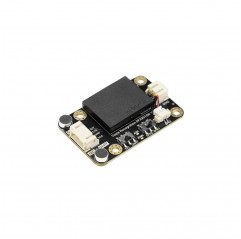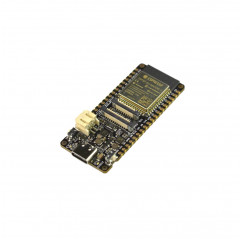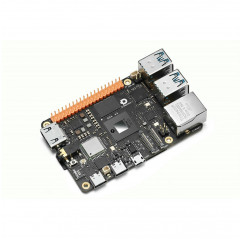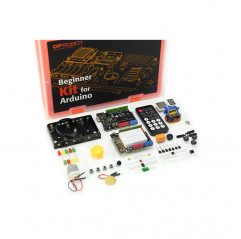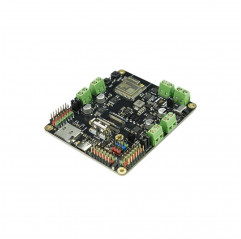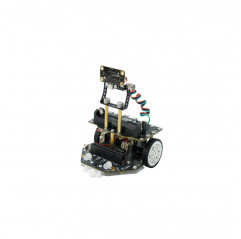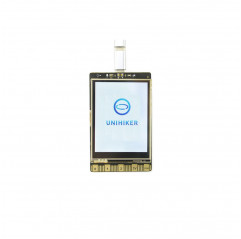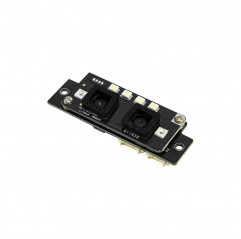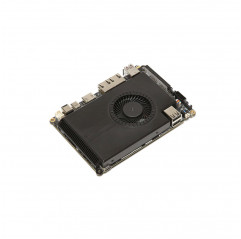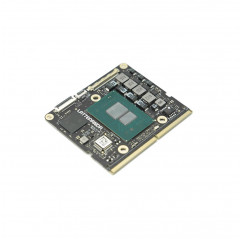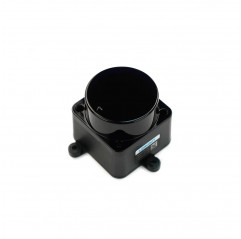Why was this module developed?
DFRobot has provided users with hundreds of sensors of all kinds. However, many of them produce raw electrical signals, such as current or voltage, and to obtain the data in standard units of physical quantities, users must consult product datasheets and convert the data through formulas or programming. In addition, the data format varies by sensor, so each sensor requires writing a specific control program, increasing the complexity of using sensors. To simplify this, DFRobot has developed the Gravity: Science Data Acquisition (SCI DAQ) module, which allows users to obtain sensor data in a simple and straightforward way.
What is the Gravity: Science Data Acquisition (SCI DAQ) module?
The Gravity: SCI DAQ module is a powerful and highly integrated data acquisition module that includes features such as on-screen display, automatic sensor recognition, sensor calibration, data logging, RTC clock, and data conversion, making data acquisition easier and more efficient. In addition, the SCI DAQ module offers versatile power options and can transmit physical quantities data collected from sensors via I2C interface, resulting in compatibility with micro:bit, Arduino, Raspberry Pi, UNIHIKER and other devices.
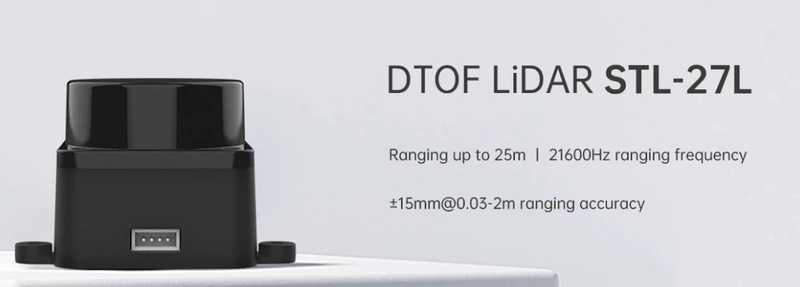
Display on Screen: The Science Data Acquisition module has a built-in screen that can display sensor data in real time, facilitating user observation.
Plug-and-Play: The Science Data Acquisition module can automatically recognize the type of I2C sensor connected, eliminating the need for manual settings and simplifying operation.
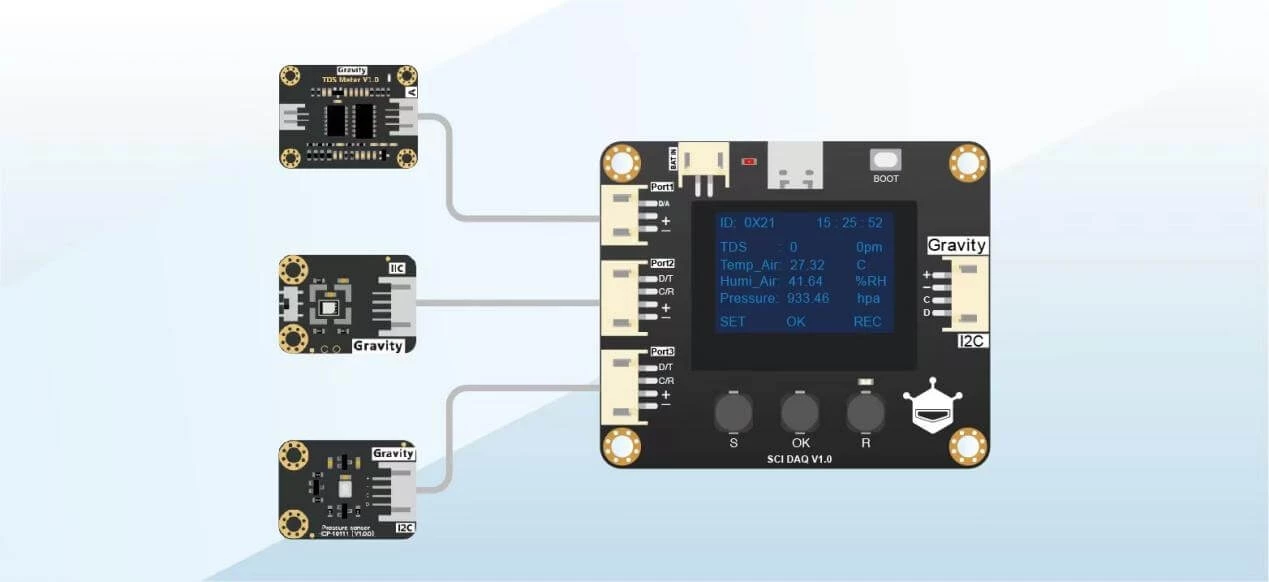
Sensor Calibration Support: The Science Data Acquisition module can perform sensor calibration directly on the board. Sensors such as pH and TDS, which require calibration before use, can be quickly calibrated on the SCI module, ensuring data accuracy and reliability.
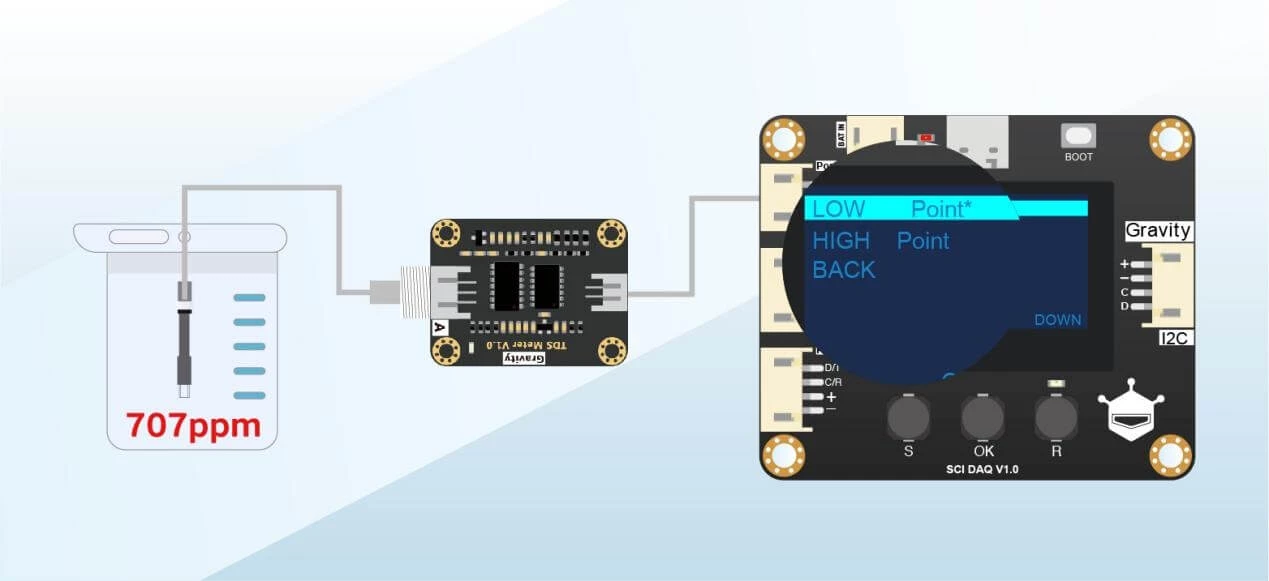
Data Logging: The Science Data Acquisition module has 16 MB of built-in memory, capable of storing more than 400,000 data. Saved data can be exported to computer via Type-C interface, making it easy for user analysis and processing.
RTC clock: The Science Data Acquisition module is equipped with a high-precision real-time clock (RTC) that can record the timestamp for each data acquisition. This allows users to easily monitor data trends and quickly perform analysis and processing.
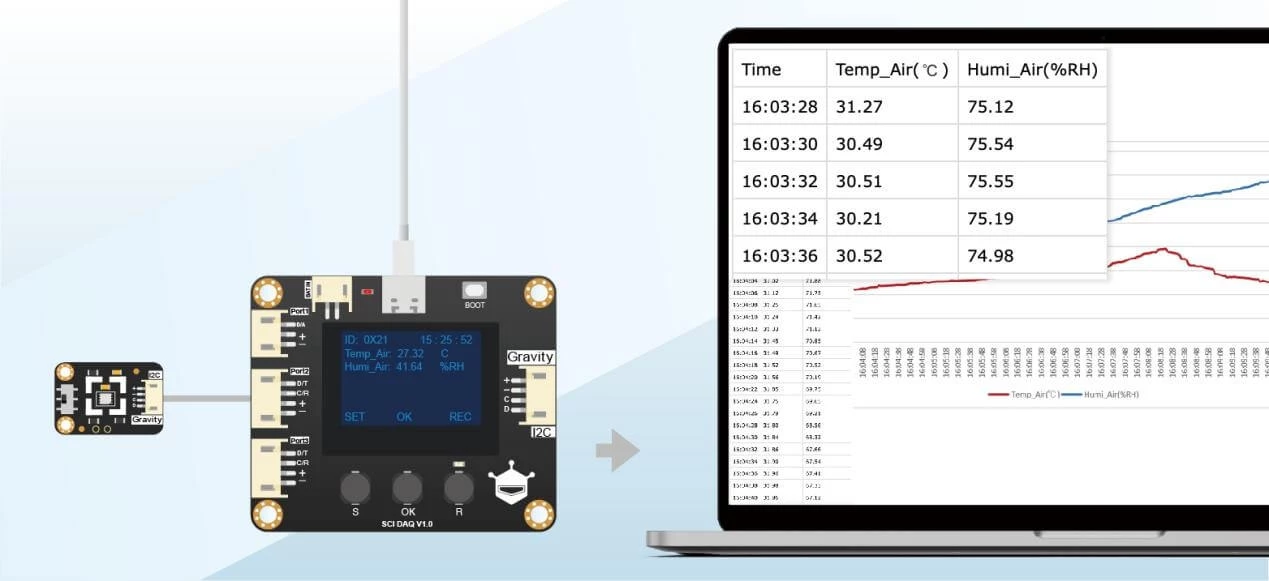
Data Conversion: The Science Data Acquisition module can automatically convert raw sensor signals into physical quantities data and provide them in a uniform format: "timestamp name1:value1 unit1, name2:value2 unit2." Specific values or units can also be obtained for a given name. The SCI DAQ module unifies the data format of different sensors, eliminating the need to load separate libraries for each sensor during programming. This greatly simplifies the programming process and reduces the difficulty of obtaining data from development boards such as micro:bit and Arduino.
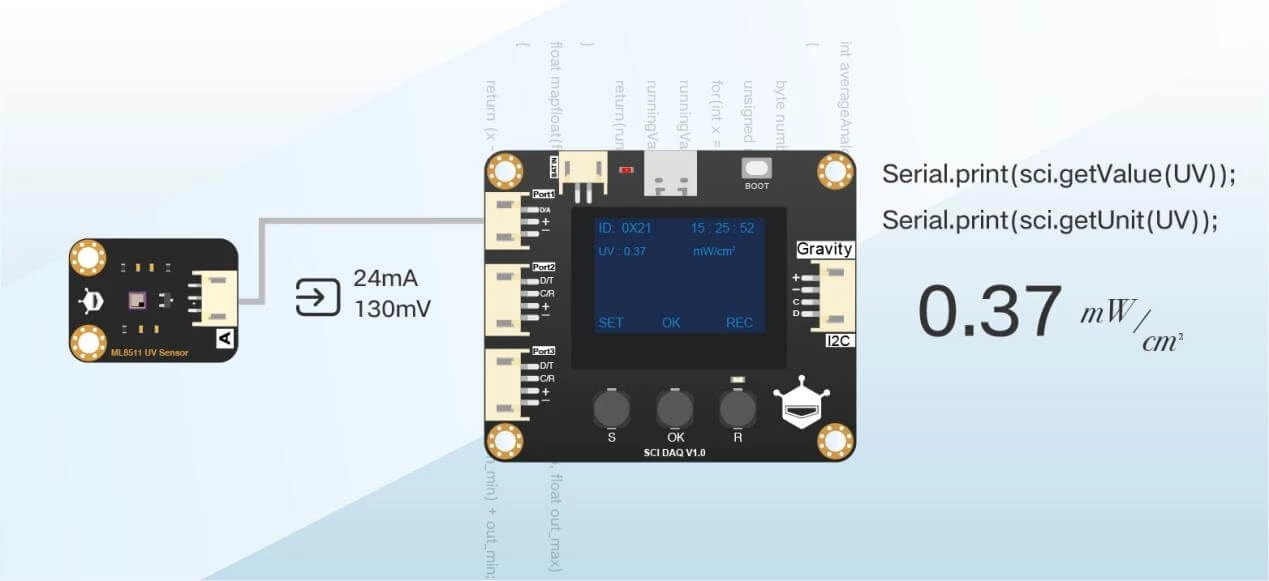
Versatile Power Options: The Science Data Acquisition module supports multiple power modes, including Type-C interface, PH2.0 battery port and I2C interface. Users can choose different power methods to flexibly meet different needs in various scenarios. If mobile data acquisition is required for outdoor activities, users can power the module via battery connected to the PH2.0 port, while powering via the I2C interface allows it to be operated simply by connecting it to development boards.
Regardless of the power supply method used, the SCI DAQ module ensures stable operation, providing users with a reliable data acquisition experience.
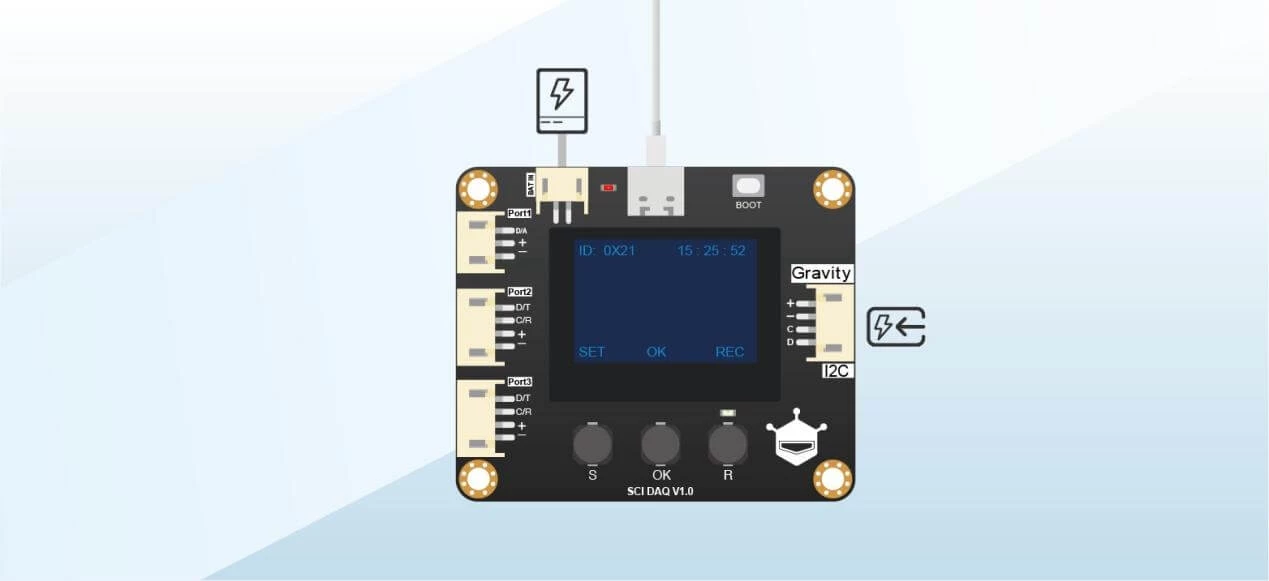
Currently, the SCI DAQ module already supports more than 20 popular sensors, such as temperature sensors, humidity, atmospheric pressure, oxygen concentration, and others. In the future, the number of supported sensors will be expanded, offering additional application scenarios for users.
Whether in scientific research, interdisciplinary teaching or IoT applications, the SCI DAQ module will be an indispensable data acquisition tool.
How to use.
- Using SCI DAQ module alone: Plug the sensor into SCI DAQ module, connect battery and screen, and the sensor data will be displayed in real time. You can also store the collected data in the built-in memory and export it to CSV format for further analysis, facilitating the completion rapido of exploratory experiments.
- Use in combination with Arduino: Connect the SCI DAQ module to a Arduino. Regardless of the sensor connected to the SCI DAQ module, theArduino can obtain physical quantities data collected from the sensor using the same code command, reducing programming difficulty. Because users can customize and write programs Arduino, they can manage and control sensor data more flexibly, providing endless possibilities for various applications.
Compatibility

Applications
- Scientific exploration: Improves efficiency and accuracy in scientific exploration activities.
- Interdisciplinary teaching: Allows teachers and students to easily complete interdisciplinary lessons, enriching content and improving teaching quality.
- Agriculture and environmental monitoring: Collaborates with various environmental sensors for applications in agriculture, water quality monitoring, weather observations and other areas.
- IoT applications: Works as a data acquisition module for IoT devices, enabling remote data transmission and control.
Package contains: 1 x Gravity: Science Data Acquisition (SCI DAQ) Module - Screen Display, Plug-and-play, Data Logging - DFRobot
Specifically, the kit includes:
- 1 x Gravity: SCI DAQ Module
- 2 x Dual PH2.0-4P Cable, 20 cm
- 1 x Dual PH2.0-3P Cable, 20 cm
- 1 x Gravity-4P I2C/UART Sensor Cable






